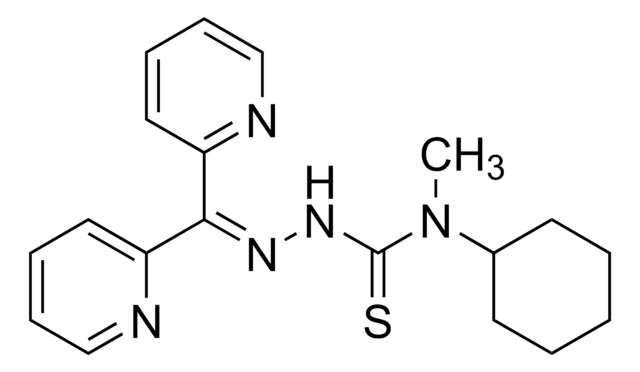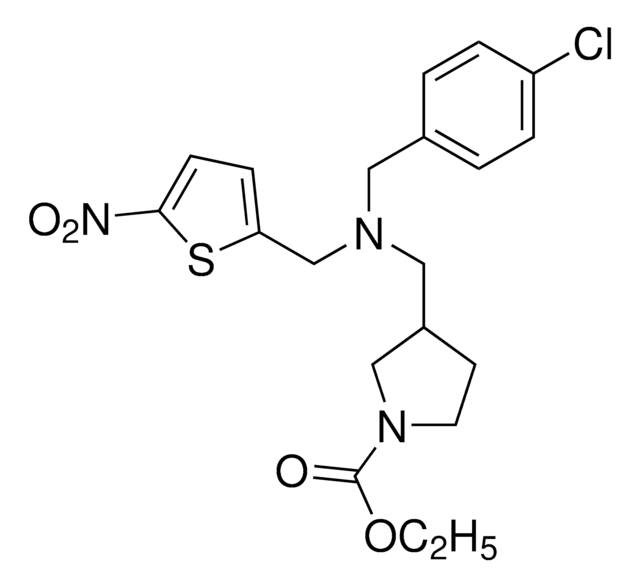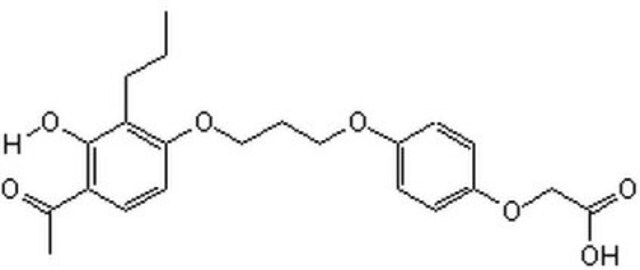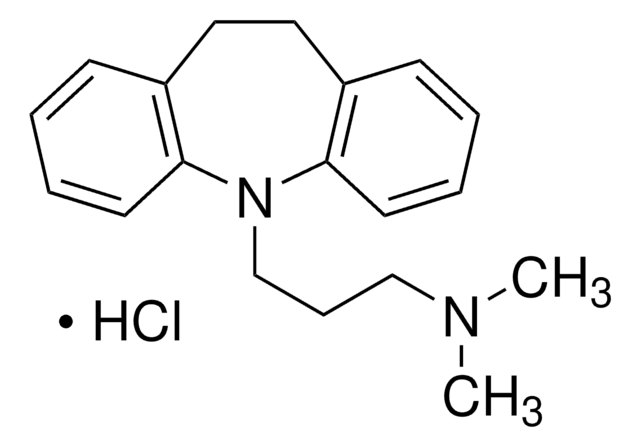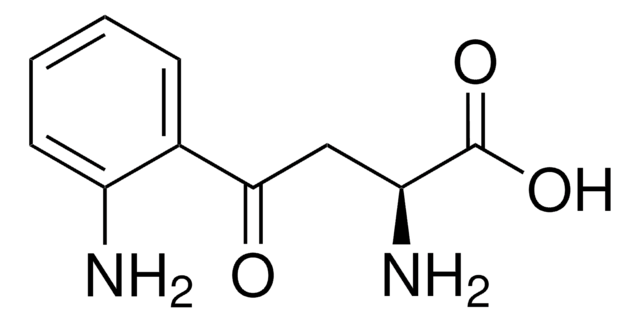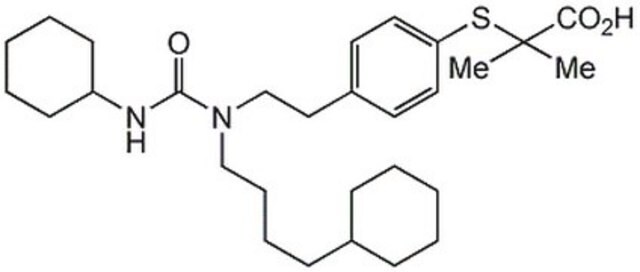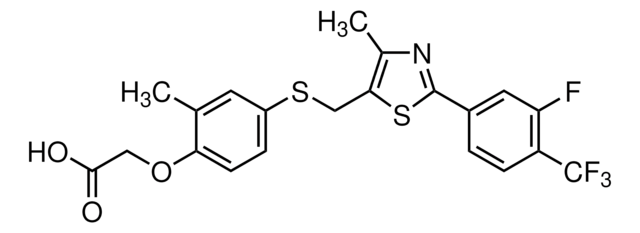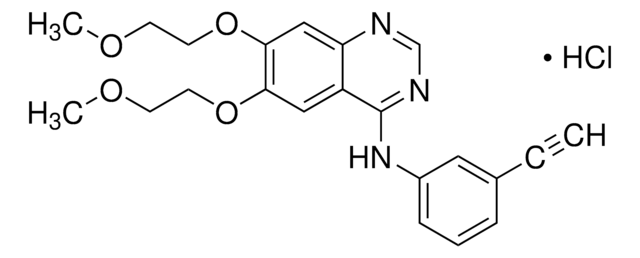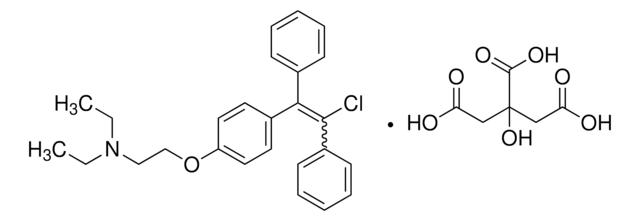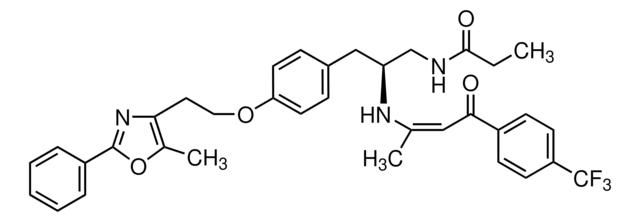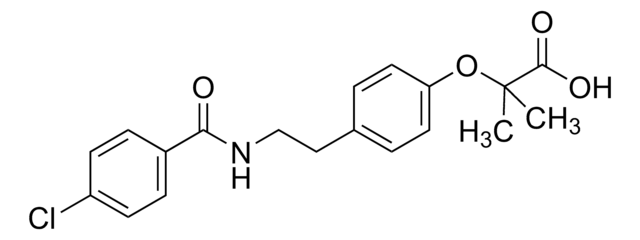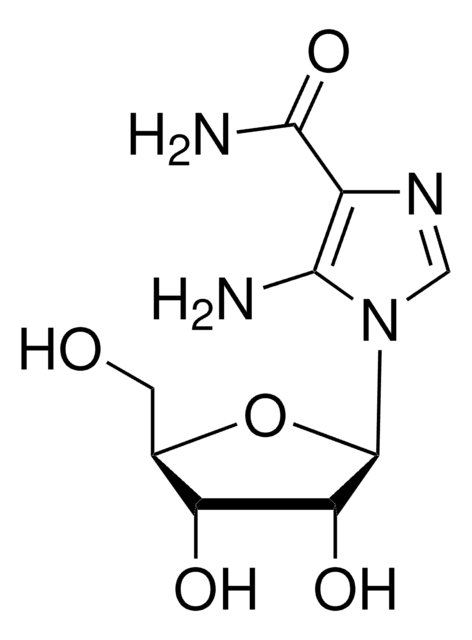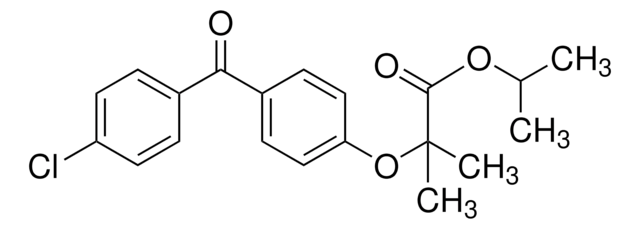Kluczowe dokumenty
SML1491
GW501516
≥98% (HPLC)
Synonim(y):
2-[2-Methyl-4-[[[4-methyl-2-[4-(trifluoromethyl)phenyl]-5-thiazolyl]methyl]thio]phenoxy]-acetic acid, GW1516
About This Item
Polecane produkty
Poziom jakości
Próba
≥98% (HPLC)
Formularz
powder
kolor
white to beige
rozpuszczalność
DMSO: 20 mg/mL, clear
temp. przechowywania
−20°C
ciąg SMILES
FC(F)(F)c1ccc(cc1)c2[s]c(c(n2)C)CSc3cc(c(cc3)OCC(=O)O)C
InChI
1S/C21H18F3NO3S2/c1-12-9-16(7-8-17(12)28-10-19(26)27)29-11-18-13(2)25-20(30-18)14-3-5-15(6-4-14)21(22,23)24/h3-9H,10-11H2,1-2H3,(H,26,27)
Klucz InChI
YDBLKRPLXZNVNB-UHFFFAOYSA-N
Zastosowanie
- to treat the differentiated L6 myotubes to test its effect on free fatty acid (FFA) uptake under mild hypoxia conditions
- in organoid culture medium to test its effect on self-renewal of PR domain containing 16 (Prdm16)-depleted intestinal stem cells
- as a component in the defatting medium for primary human hepatocytes (PHH) culture
Działania biochem./fizjol.
Kod klasy składowania
11 - Combustible Solids
Klasa zagrożenia wodnego (WGK)
WGK 3
Temperatura zapłonu (°F)
Not applicable
Temperatura zapłonu (°C)
Not applicable
Wybierz jedną z najnowszych wersji:
Certyfikaty analizy (CoA)
Nie widzisz odpowiedniej wersji?
Jeśli potrzebujesz konkretnej wersji, możesz wyszukać konkretny certyfikat według numeru partii lub serii.
Masz już ten produkt?
Dokumenty związane z niedawno zakupionymi produktami zostały zamieszczone w Bibliotece dokumentów.
Klienci oglądali również te produkty
Nasz zespół naukowców ma doświadczenie we wszystkich obszarach badań, w tym w naukach przyrodniczych, materiałoznawstwie, syntezie chemicznej, chromatografii, analityce i wielu innych dziedzinach.
Skontaktuj się z zespołem ds. pomocy technicznej